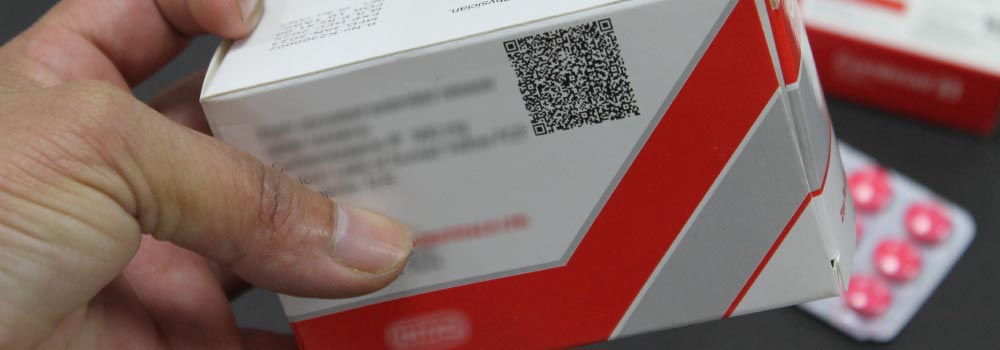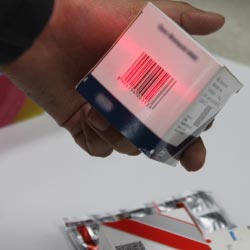Use of Barcode Systems in Healthcare Industry

- Medication Management: Barcode systems can be used to manage medications from the time they are ordered to the time they are administered. Each medication can be assigned a unique barcode that can be scanned to verify the medication is the right one for the patient and that the dose is correct.
- Patient Identification: Barcode wristbands can be used to identify patients and match them to their electronic health records. This ensures that the correct treatments and medications are given to the right patient.
- Inventory Management: To track and manage hospital inventory, including medical devices, equipment, and supplies. This can help reduce waste, improve supply chain management, and optimize inventory levels.
- Patient Transport and Tracking: Used to track patients as they move through the hospital, including during transport between departments or for imaging tests. This can help reduce wait times, improve patient flow, and ensure patients receive the right care at the right time.
- Asset Tracking: It can be used to track hospital assets, such as wheelchairs, IV pumps, and defibrillators. This can help reduce theft and loss of equipment, as well as improve maintenance and repair processes.
Conclusion: The use of barcode systems can improve hospital workflow and operational efficiency by reducing errors, improving patient safety, and optimizing resource management.
Healthcare Industry Barcodes Used For Medication Management and Tracking
Healthcare industry barcodes are used for medication management and tracking in a variety of ways. Here are some of the ways in which healthcare industry barcodes are used for medication management and tracking:
-
Medication Administration:
Used to verify that the correct medication is being given to the correct patient in the correct dosage at the correct time. This ensures that medication errors are minimized and patient safety is improved.
-
Medication Dispensing:
Used to track medication inventory levels and ensure that medications are properly labeled and dispensed to patients.
-
Medication Reconciliation:
Used to ensure that medication orders are accurately transcribed from a physician's order sheet to the patient's medication record.
-
Medication Returns:
Used to track and verify returned medications to ensure that they are properly disposed of or returned to inventory.
-
Medication Recalls:
Used to track and identify medications that have been recalled by the manufacturer or regulatory agencies, ensuring that these medications are removed from inventory and not given to patients.
Overall, healthcare industry barcodes are an important tool for medication management and tracking. By providing accurate and timely information about medications, healthcare providers can ensure that patients receive the correct medications and dosages, reducing the risk of adverse events and improving patient outcomes.
Track Medication Usage and Prevent Medication Errors

Healthcare industry barcodes can be used to track medication usage and prevent medication errors. The use of barcodes in medication management is known as barcode medication administration (BCMA) and it involves the use of barcode technology to verify medication administration at the patient's bedside.
In BCMA, each medication is labeled with a unique barcode that contains information such as the medication name, dose, and expiration date. The barcode is scanned at various points during the medication administration process, including when the medication is ordered, dispensed, and administered to the patient.
By using barcodes to track medication usage, healthcare providers can:
- Verify that the right medication is being given to the right patient
- Ensure that the medication is given at the right time and in the right dose
- Prevent medication errors such as incorrect dosing or administration of the wrong medication
- Improve medication inventory management by tracking usage and expiration dates
- Reduce medication waste by accurately tracking usage and avoiding overstocking or understocking of medications
Conclusion:The use of barcodes in medication management can help improve patient safety, reduce medication errors, and increase efficiency in healthcare settings.
Disaster Situations to Improve Patient Care and Safety in hospitals
Barcode systems can be very useful in emergency and disaster situations in hospitals to improve patient care and safety. Here are some ways they can be used:
- Patient Identification: In an emergency, it can be difficult to keep track of patients and their medical records. Barcode systems can be used to accurately identify patients, match them with their medical records, and ensure they receive the right care.
- Medication Management: During an emergency or disaster, there may be a surge of patients and medication orders. Barcode systems can help ensure that the right medication is given to the right patient at the right time, reducing the risk of medication errors.
- Equipment Tracking: In an emergency situation, equipment can get misplaced or lost. Barcode systems can help hospitals keep track of their equipment and ensure it is available when needed.
- Inventory Management: In an emergency, hospitals may need to quickly replenish their supplies. Barcode systems can help hospitals keep track of their inventory and restock as needed.
- Communication: During an emergency, communication between hospital staff is critical. Barcode systems can be used to quickly and efficiently communicate patient information, medication orders, and other important data.
Overall, barcode systems can help hospitals improve patient care and safety during emergency and disaster situations by providing accurate patient identification, medication management, equipment tracking, inventory management, and communication.
Barcodes Generation Method in Healthcare Industry
Healthcare industry barcodes are generated using specialized software or tools that are designed for this purpose. Here are some of the common software or tools used to generate healthcare industry barcodes:
-
Barcode Generators: Barcode generators are software programs that allow users to create and customize barcodes. These programs can generate barcodes in a variety of formats, including 1D and 2D barcodes.
-
Label Printing Software: Label printing software is used to design and print barcode labels for medications, patient wristbands, and other healthcare applications. This software often includes built-in barcode generation tools.
-
Electronic Health Record (EHR) Systems: Many EHR systems have built-in barcode generation capabilities that allow for barcode scanning of patient information, medications, and medical devices.
-
Pharmacy Dispensing Systems: Pharmacy dispensing systems use barcode technology to track medications, verify prescriptions, and generate labels for medication containers.
-
RFID Tagging Systems: RFID tagging systems use radio-frequency identification technology to generate barcodes that can be scanned for inventory tracking and medication management.
Overall, healthcare industry barcodes are generated using a variety of software or tools, depending on the application and the specific requirements of the healthcare organization. The goal is to generate barcodes that are accurate, legible, and scannable, and that comply with industry standards to ensure interoperability and efficiency.
Medical Barcodes Used to Improve Patient Safety and Reduce Medical Errors
Medical barcodes are used in a variety of ways to improve patient safety and reduce medical errors. Here are some of the ways in which medical barcodes are used:
-
Medication Administration:
Medical barcodes are used to verify the right medication is being given to the right patient in the right dosage at the right time. Barcode scanning ensures that the medication is correctly matched to the patient's medical record and reduces the risk of medication errors.
-
Electronic Health Records (EHR):
Medical barcodes are used to update EHRs with accurate information, such as medication administration and specimen collection data, reducing the risk of errors due to manual data entry.
-
Blood Transfusion:
Medical barcodes are used to verify the patient's identity and match the blood type to the correct patient, reducing the risk of transfusion errors.
-
Medical Device Identification:
Medical barcodes are used to identify medical devices, such as implants, during surgical procedures, ensuring that the correct device is implanted.
-
Specimen Collection:
Medical barcodes are used to ensure accurate specimen collection by matching the specimen label to the patient's medical record.
Overall, medical barcodes play an important role in improving patient safety and reducing medical errors. By providing accurate and timely information, medical barcodes ensure that patients receive the correct treatment and medications, reducing the risk of adverse events and improving patient outcomes.